Tabata training is a type of high-intensity exercise done in up to 20 minutes, which improves physical resistance and promotes increased metabolism, stimulating the burning of body fat and thus promoting weight loss.
As it is a type of exercise that does not require equipment and can only use body weight, tabata training is ideal for those who cannot go to the gym or cannot lift a lot of weight, for example.
Tabata training is recommended mainly for those who already practice physical activities and should be done under the guidance of a physical educator. In addition, it is also recommended to consult a doctor to assess your general health before starting tabata training.

Main benefits
The main benefits of tabata training are:
- Contributes to weight loss;
- Optimizes calorie burning during and after exercise, as it stimulates metabolism;
- Increases energy expenditure, as heart rate increases;
- Promotes cardiovascular resistance;
- Balances hormonal levels, reducing cortisol secretion and increasing testosterone and growth hormone secretion, contributing to muscle mass gain;
- It promotes the improvement of the aerobic system and increases anaerobic power.
Furthermore, another advantage of tabata training is the fact that it is carried out in a short period of time, so the training can be completed in 16 minutes. Furthermore, the exercises are varied and can be performed with your own body weight.
How to make
To do tabata training, it is important to wear appropriate clothing and sneakers to avoid injuries, and have a timer to count the training and interval time. Before starting training, it is important to warm up for 10 minutes.
Each training round lasts 4 minutes, where you must do a total of 8 exercises lasting 20 seconds each. It is recommended to do as many repetitions as possible during each exercise, to accelerate breathing and improve strength, promoting fat burning and toning muscles.
After the round, you must rest for 1 minute and then perform another round of 4 minutes until completing 4 rounds, which corresponds to 20 minutes.
After training, you should rest, which may include stretching to avoid injuries, improve posture and relaxation. See how to stretch.
Complete training plan
Some bodyweight exercises that can be used during tabata training are:
1. Mountain Climbers
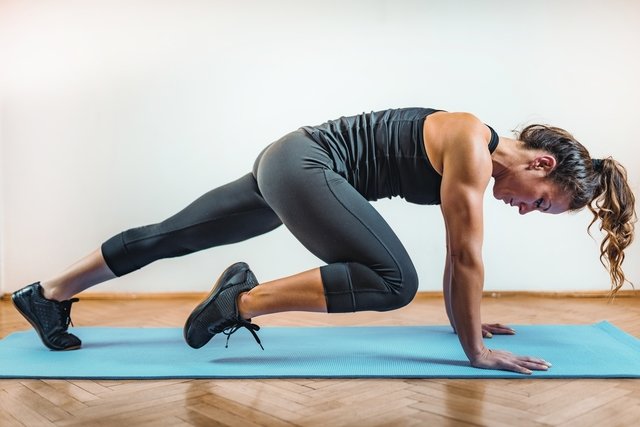
This exercise is excellent for working the muscles in your legs, back and abdomen. To do it, you must get into a plank position, as if you were going to do a push-up. Keeping your arms straight, bend one knee and pull it close to your chest. It is important to alternate legs as if you were climbing a mountain.
Exercise time: 20 seconds + 10 seconds rest.
2. Burpees
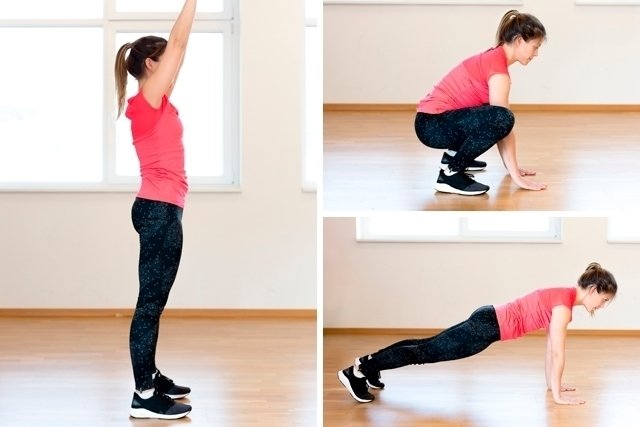
Burpees are a very complex type of exercise that allows you to work almost all muscle groups in the body, from the legs, to the arms, abdomen and back.
To do a burpee, you must stand up and then lower yourself into a squatting position. In this position, bring your hands to the floor and push your feet back until you are in a plank position. Then, return to the squatting position, pulling your feet close to your body and go back up. Repeat until the exercise time is up. Understand better how to do the burpee.
Exercise time: 20 seconds + 10 seconds rest.
3. Squats
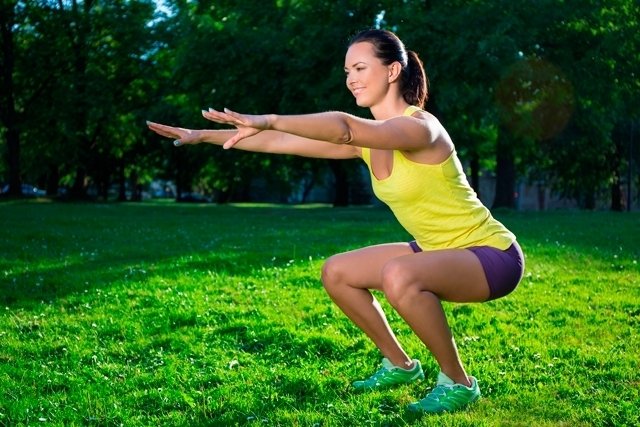
The squat exercise allows you to tone your gluteal and thigh muscles. Do a traditional squat and come back up. Then, go back down to the squat position, without moving your feet, and repeat until the end of the time. To do this exercise, it is essential to maintain good posture to avoid injuries. See how to do a squat correctly.
Exercise time: 20 seconds + 10 seconds rest.
4. Alternating Lunges
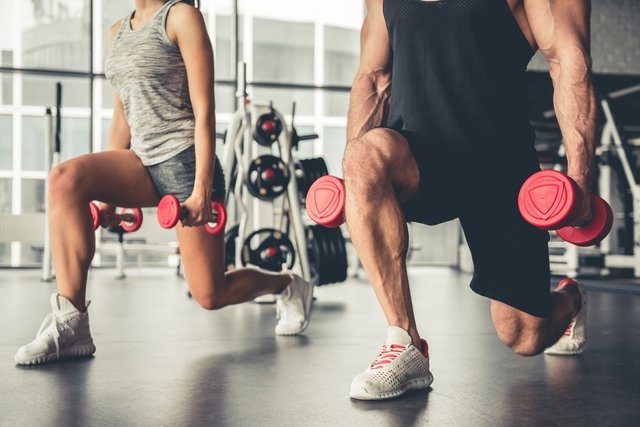
The lunge works the leg and glute muscles. To do this exercise, simply stand and then step forward until your thigh is parallel to the floor and your knee is bent at a 90º angle. Then return to the starting position and repeat the movement with the other leg, always alternating legs for 20 seconds.
Exercise time: 20 seconds + 10 seconds rest.
5. Bicycle crunches
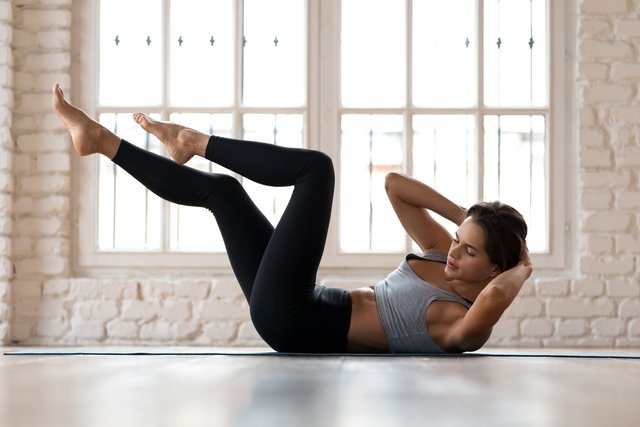
This type of sit-up is a more intense way of training the entire abdominal muscle group. To do it, simply lie on your back on the floor and then raise your legs, making pedaling movements in the air. To avoid back pain, you can place your hands under the small of your back and try to keep your back always touching the floor.
Exercise time: 20 seconds + 10 seconds rest.
6. Jump squats

Jump squats tone the legs and glutes, and increase cardiorespiratory endurance, promoting the burning of body fat and weight loss.
To do this squat, you must move your legs slightly towards your shoulders, contract your abdomen and squat until your knee forms a 90º angle, keeping your back straight and moving your hips backwards. Then, push your feet against the floor to lift and jump until your legs are straight. When returning to the ground, cushion the fall by slightly bending your knees and returning to the initial squat.
Exercise time: 20 seconds + 10 seconds rest.
7. High knees
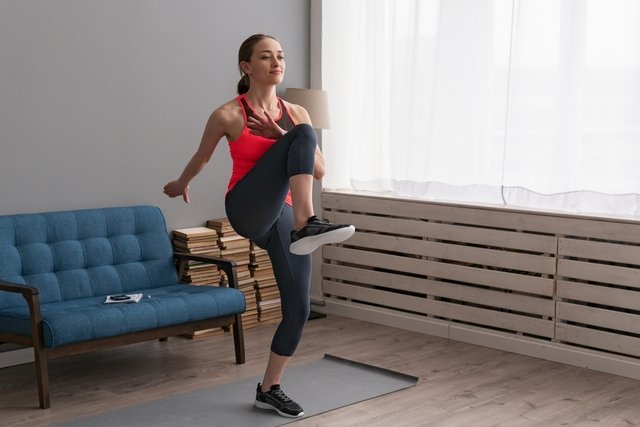
The high knees exercise allows you to strengthen and tone the muscles in your legs, abdomen and back. To start the exercise, simply stand up and then jump, pulling one knee as high as possible at a time, alternating throughout the exercise.
Exercise time: 20 seconds + 10 seconds rest.
8. Traditional crunches
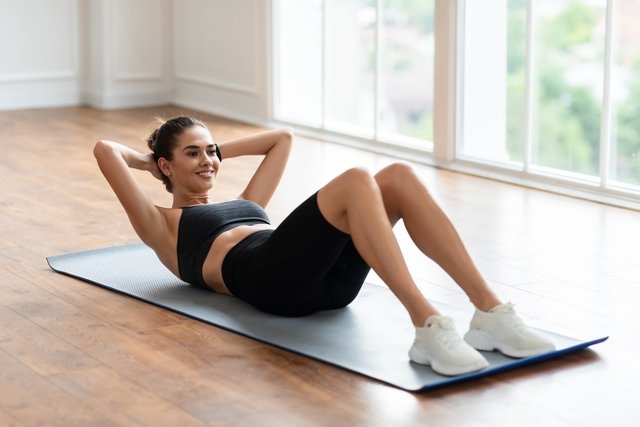
The traditional sit-up is one of the simplest and most effective exercises for working the abdomen. To do this, simply place your back on the floor and bend your knees, placing your feet on the floor. Finally, try to lift your back off the floor as much as possible while looking at the ceiling. Repeat as many times as you can.
Exercise time: 20 seconds + 10 seconds rest.
9. Push-ups
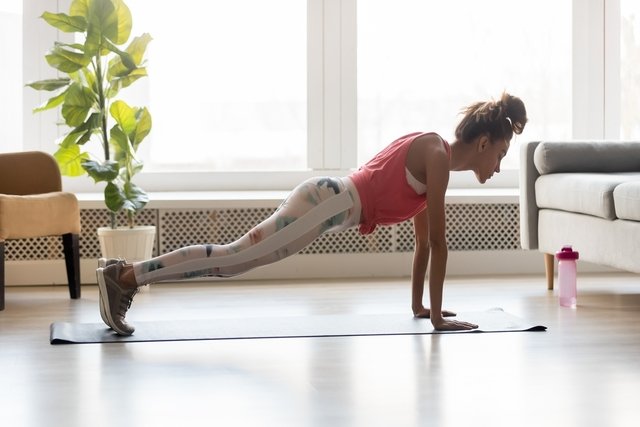
This exercise allows you to work your chest muscles, arms and abdomen. In this exercise, you must do a traditional push-up, keeping your arms shoulder-width apart and going down until you form a 90º angle with your elbow. If it is too difficult, you can leave your knees touching the floor.
Exercise time: 20 seconds + 10 seconds rest.
10. Polichinelos
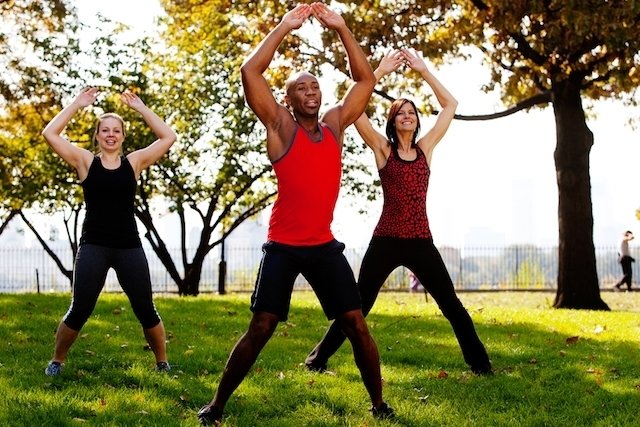
Jumping jacks exercise is a great way to work all the muscles in your body, while also regulating your heart rate. To do it correctly, just stand and then do a small jump while opening your legs and raising your arms. Afterwards, close your legs and lower your arms. Repeat until the exercise time is up.
Exercise time: 20 seconds + 10 seconds rest.

Sign up for our newsletter and stay up to date with exclusive news
that can transform your routine!
Warning: Undefined array key "title" in /home/storelat/public_html/wp-content/plugins/link-whisper-premium/templates/frontend/related-posts.php on line 12
Warning: Undefined array key "title_tag" in /home/storelat/public_html/wp-content/plugins/link-whisper-premium/templates/frontend/related-posts.php on line 13




